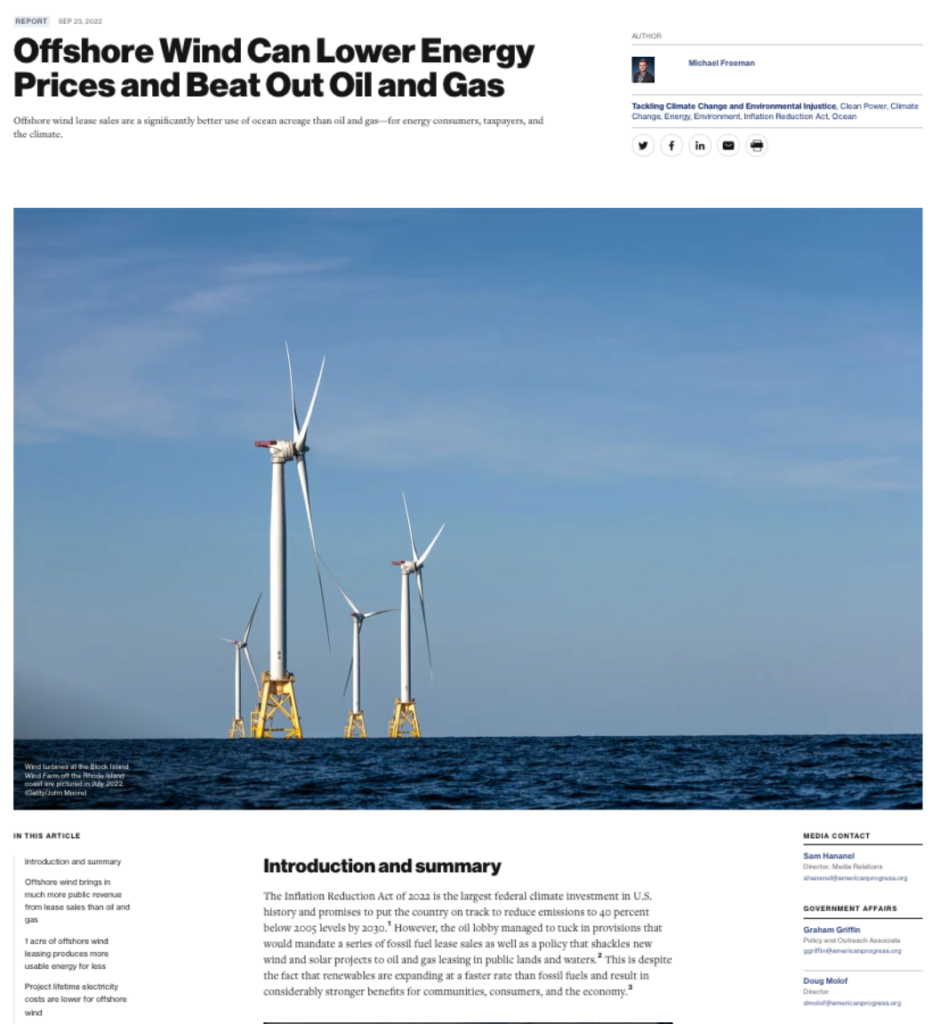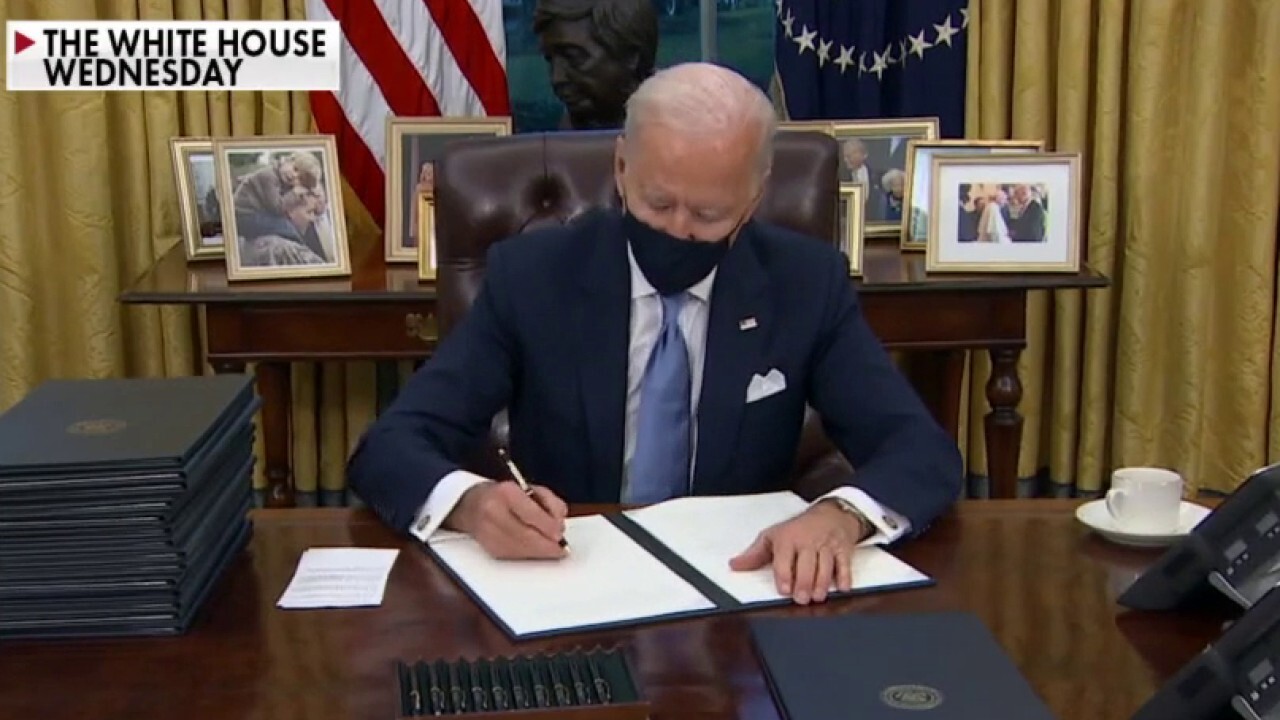Why Are Energy Firms Turning Away From Expensive Offshore Wind Projects?

Table of Contents
Soaring Costs and Budget Overruns
The economic headwinds impacting global industries are significantly affecting the viability of offshore wind farm development. The sheer scale of these projects, coupled with escalating costs, is making them increasingly difficult to finance and complete on time and within budget.
Inflation and Supply Chain Disruptions
The global economic climate has fueled inflation, impacting the cost of essential materials and components. Supply chain disruptions further exacerbate this problem, causing delays and price hikes.
- Increased steel prices: Steel is a critical component in offshore wind turbine construction, and its price volatility significantly impacts project budgets.
- Delays in component manufacturing: Manufacturing delays, often caused by supply chain bottlenecks, push back project timelines and increase overall costs.
- Higher transportation and installation costs: The transportation and installation of massive turbine components to offshore locations are expensive, and these costs are further amplified by fuel price increases and logistical challenges.
Underestimation of Engineering and Environmental Challenges
Initial project assessments often fail to fully account for the unique challenges presented by the marine environment. This underestimation leads to unforeseen costs and delays.
- Unexpected geological challenges during foundation installation: Unforeseen geological conditions can require significant design modifications and costly remediation efforts.
- More rigorous environmental impact assessments and mitigation strategies: The environmental impact of offshore wind farms is under increasing scrutiny, leading to more extensive and expensive assessments and mitigation measures.
- Increased costs associated with specialized equipment and expertise: Working in harsh marine environments requires specialized equipment and highly skilled personnel, which significantly increases project costs.
Financing Difficulties
Securing the substantial funding required for offshore wind projects is proving increasingly difficult due to their inherent risks and the current economic climate.
- Difficulty attracting investors concerned about return on investment: Investors are hesitant to commit capital due to the long project timelines, cost overruns, and regulatory uncertainties.
- Rising interest rates making financing more expensive: Higher interest rates make it more expensive to borrow the capital needed for these large-scale projects.
- Lengthy permitting processes and delays impacting project timelines and profitability: The time-consuming permitting process further increases financial risk and reduces the attractiveness of these projects for investors.
Logistical and Technological Hurdles
Beyond the financial challenges, the logistical and technological complexities of offshore wind farm development present significant hurdles.
Complex Permitting and Regulatory Processes
Navigating the intricate web of permits and approvals from various governmental agencies is a lengthy and expensive process, often leading to significant project delays.
- Environmental impact assessments: Comprehensive environmental assessments are required, adding time and cost to the project timeline.
- Grid connection approvals: Securing approvals for connecting the offshore wind farm to the onshore grid can be a lengthy and complex process.
- Stakeholder consultations and negotiations: Extensive stakeholder consultations and negotiations are often required, adding to the project’s overall duration and expense.
Technological Limitations and Maintenance Challenges
The technology used in offshore wind farms is constantly evolving, but it is still relatively new and prone to unforeseen challenges, leading to high maintenance costs.
- Turbine failures and maintenance costs: Turbine failures are a significant concern, requiring expensive repairs and potentially impacting energy production.
- Cable failures and grid connection issues: Undersea cables are vulnerable to damage, leading to costly repairs and potential power outages.
- The difficulty and expense of accessing and repairing offshore infrastructure: Accessing and repairing offshore infrastructure is challenging and expensive, requiring specialized vessels and equipment.
Skilled Labor Shortages
The specialized skills needed for offshore wind farm development are in high demand, creating labor shortages and driving up labor costs.
- Higher labor costs: Competition for skilled workers pushes up wages, increasing project expenses.
- Project delays due to workforce shortages: A shortage of skilled labor can cause significant project delays.
- Increased competition for qualified personnel: Energy companies compete fiercely for the limited pool of qualified personnel, further driving up labor costs.
Shifting Market Dynamics and Policy Uncertainty
The landscape of renewable energy is constantly evolving, creating challenges for offshore wind projects.
Competition from Other Renewable Energy Sources
Solar and onshore wind technologies are rapidly advancing, becoming increasingly cost-competitive with offshore wind.
- Lower installation costs for solar and onshore wind: Solar and onshore wind projects generally have lower upfront installation costs compared to offshore wind.
- Faster deployment times for solar and onshore wind: Solar and onshore wind projects can often be deployed more quickly than offshore wind farms.
- Improved efficiency and reliability of solar and onshore wind technologies: Continuous improvements in solar and onshore wind technology are enhancing their efficiency and reliability.
Policy and Subsidy Changes
Government support for renewable energy is evolving, creating uncertainty for offshore wind projects.
- Reduction or removal of tax credits and other incentives: Changes in government policies can reduce or eliminate financial incentives for offshore wind development.
- Changes in renewable energy targets and policies: Shifts in renewable energy targets and policies can impact the demand for offshore wind energy.
- Increased scrutiny of project environmental impacts: Increased environmental regulations can add to project costs and complexity.
Grid Infrastructure Limitations
Integrating large amounts of offshore wind energy into existing grid infrastructure presents significant challenges and requires substantial investment.
- Capacity limitations in existing transmission lines: Existing transmission lines may lack the capacity to handle the large influx of energy from offshore wind farms.
- The need for costly grid reinforcement and expansion projects: Upgrading and expanding the grid infrastructure is expensive and time-consuming.
- Challenges in managing intermittent energy supply from offshore wind farms: The intermittent nature of wind energy requires sophisticated grid management strategies.
Conclusion
The escalating costs, logistical complexities, and shifting market dynamics are undeniably impacting the attractiveness of large-scale offshore wind projects for many energy firms. While the potential of offshore wind as a clean energy source remains significant, a more realistic assessment of the challenges and a more sustainable approach to development are crucial. Careful planning, technological innovation, and a supportive policy environment are essential to overcoming these hurdles and unlocking the true potential of offshore wind energy. Ignoring these critical factors could lead to further reluctance and delays in developing this crucial renewable energy source. A more pragmatic approach to the financial and logistical implications of expensive offshore wind projects is necessary for a successful transition to a greener energy future.

Featured Posts
-
 January 6th Hearing Star Cassidy Hutchinson Announces Fall Memoir
May 03, 2025
January 6th Hearing Star Cassidy Hutchinson Announces Fall Memoir
May 03, 2025 -
 Bidens Economic Policies Are They To Blame For The Slowing Growth
May 03, 2025
Bidens Economic Policies Are They To Blame For The Slowing Growth
May 03, 2025 -
 Visage Emu De Macron Au Dela De La Douleur La Rencontre Avec Les Victimes De L Armee Israelienne
May 03, 2025
Visage Emu De Macron Au Dela De La Douleur La Rencontre Avec Les Victimes De L Armee Israelienne
May 03, 2025 -
 Is Reform Uk The Right Choice For Uk Farmers
May 03, 2025
Is Reform Uk The Right Choice For Uk Farmers
May 03, 2025 -
 Lotto Results Saturday April 12th Jackpot Numbers
May 03, 2025
Lotto Results Saturday April 12th Jackpot Numbers
May 03, 2025
Latest Posts
-
 Lotto 6aus49 Gewinnzahlen Des Mittwochs 9 4 2025
May 03, 2025
Lotto 6aus49 Gewinnzahlen Des Mittwochs 9 4 2025
May 03, 2025 -
 Gewinnzahlen Lotto 6aus49 Mittwoch 9 April 2025
May 03, 2025
Gewinnzahlen Lotto 6aus49 Mittwoch 9 April 2025
May 03, 2025 -
 April 2025 Lotto 6aus49 Zahlen Und Quoten
May 03, 2025
April 2025 Lotto 6aus49 Zahlen Und Quoten
May 03, 2025 -
 Lotto 6aus49 Ergebnis Des 19 April 2025
May 03, 2025
Lotto 6aus49 Ergebnis Des 19 April 2025
May 03, 2025 -
 Lotto 6aus49 Ergebnisse Und Gewinnzahlen Vom 19 April 2025
May 03, 2025
Lotto 6aus49 Ergebnisse Und Gewinnzahlen Vom 19 April 2025
May 03, 2025
